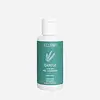What's inside
What's inside
 Key Ingredients
Key Ingredients

 Benefits
Benefits

 Concerns
Concerns

 Ingredients Side-by-side
Ingredients Side-by-side

Water
Skin ConditioningCocamidopropyl Betaine
CleansingSodium Lauroamphoacetate
CleansingSodium Lactate
BufferingSodium Gluconate
Skin ConditioningPropanediol
SolventPicea Abies Extract
Skin ConditioningPEG-150 Distearate
EmulsifyingDecyl Glucoside
CleansingXanthan Gum
EmulsifyingLactic Acid
BufferingAllantoin
Skin ConditioningOlive Glycerides
EmulsifyingCeramide NP
Skin ConditioningRosmarinus Officinalis Leaf Oil
MaskingDisodium EDTA
Phenoxyethanol
PreservativeEthylhexylglycerin
Skin ConditioningWater, Cocamidopropyl Betaine, Sodium Lauroamphoacetate, Sodium Lactate, Sodium Gluconate, Propanediol, Picea Abies Extract, PEG-150 Distearate, Decyl Glucoside, Xanthan Gum, Lactic Acid, Allantoin, Olive Glycerides, Ceramide NP, Rosmarinus Officinalis Leaf Oil, Disodium EDTA, Phenoxyethanol, Ethylhexylglycerin
Water
Skin ConditioningLauryl Glucoside
CleansingDisodium Laureth Sulfosuccinate
CleansingCocamidopropyl Betaine
CleansingGlycerin
HumectantButylene Glycol
HumectantPolyquaternium-10
Centella Asiatica Leaf Water
Skin ConditioningSodium Hyaluronate
HumectantSodium Hyaluronate Crosspolymer
HumectantHydrolyzed Hyaluronic Acid
HumectantHyaluronic Acid
HumectantHydrolyzed Sodium Hyaluronate
Skin ConditioningCentella Asiatica Extract
CleansingPropolis Extract
Skin ConditioningAsiaticoside
AntioxidantMadecassoside
AntioxidantAsiatic Acid
Skin ConditioningMadecassic Acid
Skin ConditioningPentylene Glycol
Skin ConditioningEthylhexylglycerin
Skin ConditioningCitric Acid
BufferingSodium Benzoate
MaskingSodium Chloride
MaskingCaprylyl Glycol
EmollientDisodium EDTA
1,2-Hexanediol
Skin ConditioningWater, Lauryl Glucoside, Disodium Laureth Sulfosuccinate, Cocamidopropyl Betaine, Glycerin, Butylene Glycol, Polyquaternium-10, Centella Asiatica Leaf Water, Sodium Hyaluronate, Sodium Hyaluronate Crosspolymer, Hydrolyzed Hyaluronic Acid, Hyaluronic Acid, Hydrolyzed Sodium Hyaluronate, Centella Asiatica Extract, Propolis Extract, Asiaticoside, Madecassoside, Asiatic Acid, Madecassic Acid, Pentylene Glycol, Ethylhexylglycerin, Citric Acid, Sodium Benzoate, Sodium Chloride, Caprylyl Glycol, Disodium EDTA, 1,2-Hexanediol
 Reviews
Reviews

Ingredients Explained
These ingredients are found in both products.
Ingredients higher up in an ingredient list are typically present in a larger amount.
Cocamidopropyl Betaine is a fatty acid created by mixing similar compounds in coconut oil and dimethylaminopropylamine, a compound with two amino groups.
This ingredient is a surfactant and cleanser. It helps gather the dirt, pollutants, and other impurities in your skin to be washed away. It also helps thicken a product and make the texture more creamy.
Being created from coconut oil means Cocamidopropyl Betaine is hydrating for the skin.
While Cocamidopropyl Betaine was believed to be an allergen, a study from 2012 disproved this. It found two compounds in unpure Cocamidopropyl Betaine to be the irritants: aminoamide and 3-dimethylaminopropylamine. High-grade and pure Cocamidopropyl Betaine did not induce allergic reactions during this study.
Learn more about Cocamidopropyl BetaineDisodium EDTA plays a role in making products more stable by aiding other preservatives.
It is a chelating agent, meaning it neutralizes metal ions that may be found in a product.
Disodium EDTA is a salt of edetic acid and is found to be safe in cosmetic ingredients.
Learn more about Disodium EDTAEthylhexylglycerin (we can't pronounce this either) is commonly used as a preservative and skin softener. It is derived from glyceryl.
You might see Ethylhexylglycerin often paired with other preservatives such as phenoxyethanol. Ethylhexylglycerin has been found to increase the effectiveness of these other preservatives.
Water. It's the most common cosmetic ingredient of all. You'll usually see it at the top of ingredient lists, meaning that it makes up the largest part of the product.
So why is it so popular? Water most often acts as a solvent - this means that it helps dissolve other ingredients into the formulation.
You'll also recognize water as that liquid we all need to stay alive. If you see this, drink a glass of water. Stay hydrated!
Learn more about Water